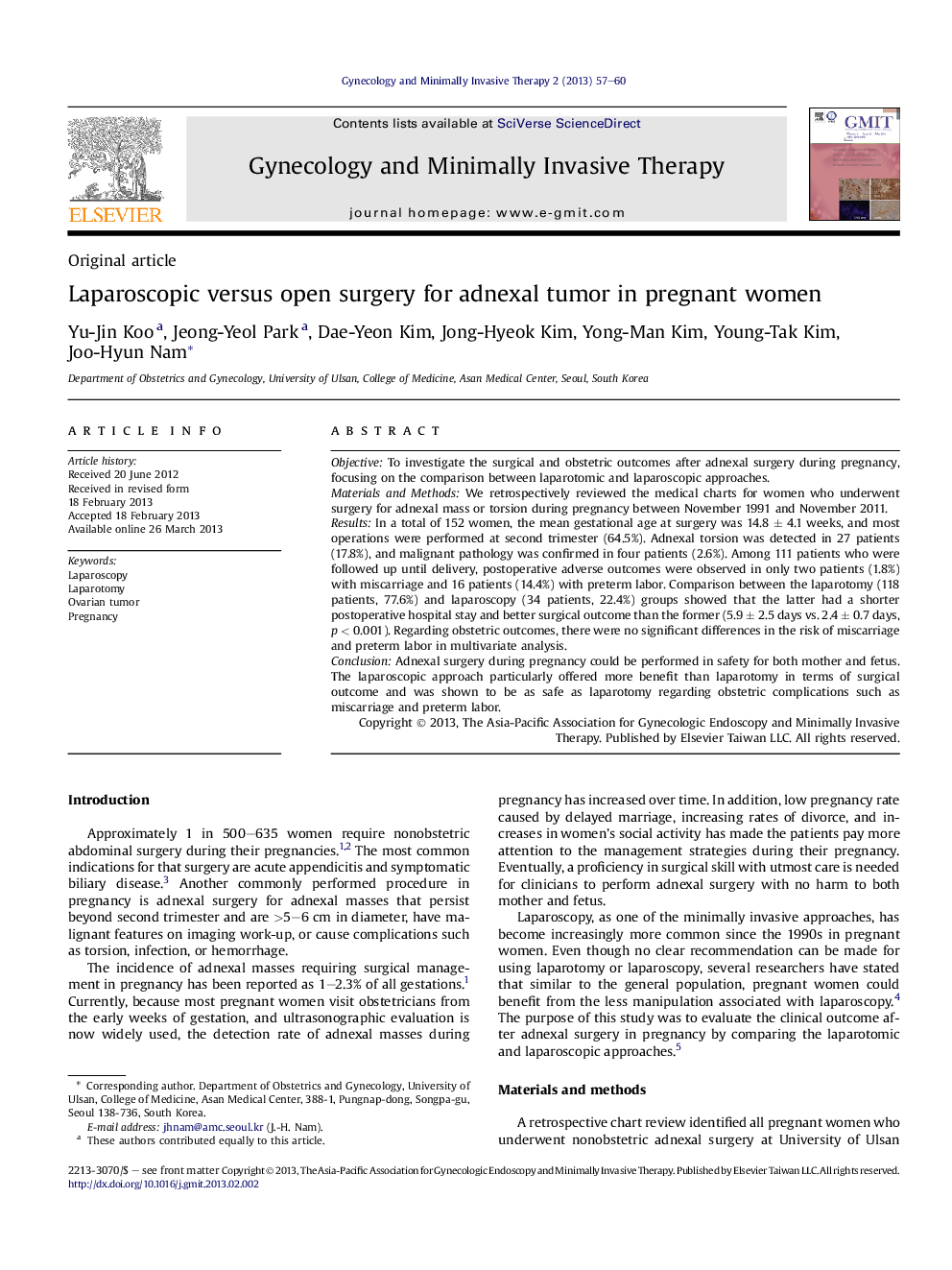| Article ID | Journal | Published Year | Pages | File Type |
|---|---|---|---|---|
| 3950593 | Gynecology and Minimally Invasive Therapy | 2013 | 4 Pages |
ObjectiveTo investigate the surgical and obstetric outcomes after adnexal surgery during pregnancy, focusing on the comparison between laparotomic and laparoscopic approaches.Materials and MethodsWe retrospectively reviewed the medical charts for women who underwent surgery for adnexal mass or torsion during pregnancy between November 1991 and November 2011.ResultsIn a total of 152 women, the mean gestational age at surgery was 14.8 ± 4.1 weeks, and most operations were performed at second trimester (64.5%). Adnexal torsion was detected in 27 patients (17.8%), and malignant pathology was confirmed in four patients (2.6%). Among 111 patients who were followed up until delivery, postoperative adverse outcomes were observed in only two patients (1.8%) with miscarriage and 16 patients (14.4%) with preterm labor. Comparison between the laparotomy (118 patients, 77.6%) and laparoscopy (34 patients, 22.4%) groups showed that the latter had a shorter postoperative hospital stay and better surgical outcome than the former (5.9 ± 2.5 days vs. 2.4 ± 0.7 days, p < 0.001). Regarding obstetric outcomes, there were no significant differences in the risk of miscarriage and preterm labor in multivariate analysis.ConclusionAdnexal surgery during pregnancy could be performed in safety for both mother and fetus. The laparoscopic approach particularly offered more benefit than laparotomy in terms of surgical outcome and was shown to be as safe as laparotomy regarding obstetric complications such as miscarriage and preterm labor.
